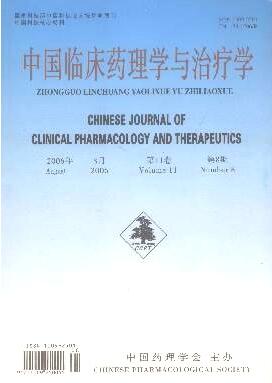Protective effect of total flavones of Bidens pilosa L on experimental liver ibrosis in rats
CHEN Fei-hu, YUAN Li-ping, ZHONG Ming-mei, XIA Li-juan, LI Jun
2006, 11(12):
1369-1374.
 Asbtract
(
175 )
Asbtract
(
175 )
 PDF (1059KB)
(
561
)
References |
Related Articles |
Metrics
PDF (1059KB)
(
561
)
References |
Related Articles |
Metrics
AIM: To observe the curative effect of total lavones of Bidens pilosa L (TFB) on experimental liver ibrosis in rats.METHODS: Rat liver fibrosis model as established by subcutaneous injection (s.c.) of 50 % Cl4 twice a week lasting for 18 weeks.TFB (160, 80,40 mg·kg-1) was treated gastrogavage (i.g.) daily since he 9th week.The spleen and liver weights were eighed. The contents of alanine aminotransferaseALT), aspartate aminotransferase (AST), hydroxyproline(Hyp), malondialdehyde (MDA) and glutathione eroxidase (GSH-Px) in liver tissue were assayed using he corresponding kits.The hyaluronic acid (HA), procollagen II (PC Ⅲ) and C Ⅳcontents in serum were also ssessed by radioimmunoassay.Liver samples collected fter experiment were stained with hematoxylin-eosinHE) and Masson and scored.Moreover, electron microscope as used to observe ultramicrosrtucture of the cells n livers.RESULTS: CCl4 caused liver fibrosis, featuring ncreases in spleen and liver weights, serum ALT,AST, HA, PC Ⅲ, C Ⅳ, and liver MDA and HyPcontents,a decrease in liver GSH-Px activity.Compared with odel group, TFB (160, 80 mg·kg-1) treatment significantly educed spleen and liver weight, serum ALT,AST, HA, PC Ⅲ, C Ⅳ, liver MDA andHyPcontent (P<0.01).Moreover, TFB 160 or 80 mg·kg-1 could increase iver GSH-Px activity (P<0.01).Fibrosis changes f liver histology was also improved in TFB (80, 160 g·kg-1) -treated rats (P<0.05).CONCLUSION: TFB significantly reduced CCl4-induced liver fibrosis in ats, probably through exerting a protective effect by its ree-radical scavenging ability.


